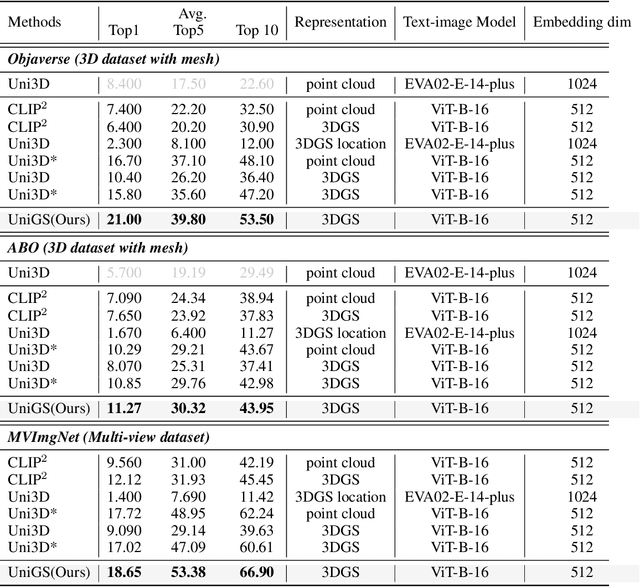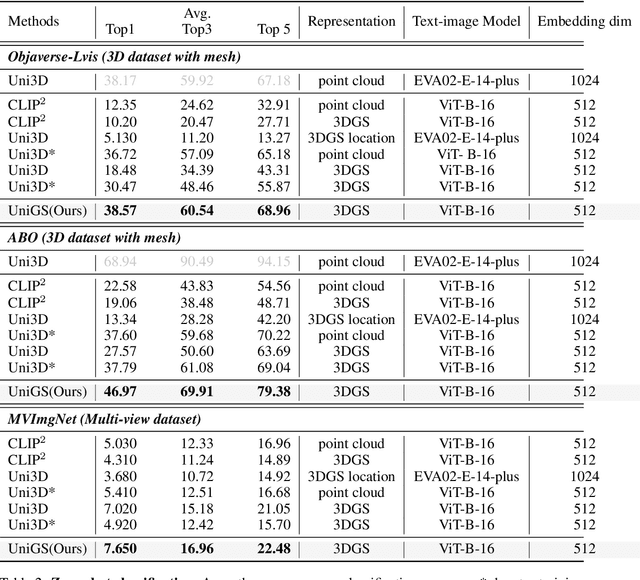Haoyuan Li
Helmsman: Autonomous Synthesis of Federated Learning Systems via Multi-Agent Collaboration
Oct 16, 2025Abstract:Federated Learning (FL) offers a powerful paradigm for training models on decentralized data, but its promise is often undermined by the immense complexity of designing and deploying robust systems. The need to select, combine, and tune strategies for multifaceted challenges like data heterogeneity and system constraints has become a critical bottleneck, resulting in brittle, bespoke solutions. To address this, we introduce Helmsman, a novel multi-agent system that automates the end-to-end synthesis of federated learning systems from high-level user specifications. It emulates a principled research and development workflow through three collaborative phases: (1) interactive human-in-the-loop planning to formulate a sound research plan, (2) modular code generation by supervised agent teams, and (3) a closed-loop of autonomous evaluation and refinement in a sandboxed simulation environment. To facilitate rigorous evaluation, we also introduce AgentFL-Bench, a new benchmark comprising 16 diverse tasks designed to assess the system-level generation capabilities of agentic systems in FL. Extensive experiments demonstrate that our approach generates solutions competitive with, and often superior to, established hand-crafted baselines. Our work represents a significant step towards the automated engineering of complex decentralized AI systems.
Matrix-3D: Omnidirectional Explorable 3D World Generation
Aug 11, 2025Abstract:Explorable 3D world generation from a single image or text prompt forms a cornerstone of spatial intelligence. Recent works utilize video model to achieve wide-scope and generalizable 3D world generation. However, existing approaches often suffer from a limited scope in the generated scenes. In this work, we propose Matrix-3D, a framework that utilize panoramic representation for wide-coverage omnidirectional explorable 3D world generation that combines conditional video generation and panoramic 3D reconstruction. We first train a trajectory-guided panoramic video diffusion model that employs scene mesh renders as condition, to enable high-quality and geometrically consistent scene video generation. To lift the panorama scene video to 3D world, we propose two separate methods: (1) a feed-forward large panorama reconstruction model for rapid 3D scene reconstruction and (2) an optimization-based pipeline for accurate and detailed 3D scene reconstruction. To facilitate effective training, we also introduce the Matrix-Pano dataset, the first large-scale synthetic collection comprising 116K high-quality static panoramic video sequences with depth and trajectory annotations. Extensive experiments demonstrate that our proposed framework achieves state-of-the-art performance in panoramic video generation and 3D world generation. See more in https://matrix-3d.github.io.
Does Your 3D Encoder Really Work? When Pretrain-SFT from 2D VLMs Meets 3D VLMs
Jun 06, 2025Abstract:Remarkable progress in 2D Vision-Language Models (VLMs) has spurred interest in extending them to 3D settings for tasks like 3D Question Answering, Dense Captioning, and Visual Grounding. Unlike 2D VLMs that typically process images through an image encoder, 3D scenes, with their intricate spatial structures, allow for diverse model architectures. Based on their encoder design, this paper categorizes recent 3D VLMs into 3D object-centric, 2D image-based, and 3D scene-centric approaches. Despite the architectural similarity of 3D scene-centric VLMs to their 2D counterparts, they have exhibited comparatively lower performance compared with the latest 3D object-centric and 2D image-based approaches. To understand this gap, we conduct an in-depth analysis, revealing that 3D scene-centric VLMs show limited reliance on the 3D scene encoder, and the pre-train stage appears less effective than in 2D VLMs. Furthermore, we observe that data scaling benefits are less pronounced on larger datasets. Our investigation suggests that while these models possess cross-modal alignment capabilities, they tend to over-rely on linguistic cues and overfit to frequent answer distributions, thereby diminishing the effective utilization of the 3D encoder. To address these limitations and encourage genuine 3D scene understanding, we introduce a novel 3D Relevance Discrimination QA dataset designed to disrupt shortcut learning and improve 3D understanding. Our findings highlight the need for advanced evaluation and improved strategies for better 3D understanding in 3D VLMs.
Heartcare Suite: Multi-dimensional Understanding of ECG with Raw Multi-lead Signal Modeling
Jun 06, 2025Abstract:We present Heartcare Suite, a multimodal comprehensive framework for finegrained electrocardiogram (ECG) understanding. It comprises three key components: (i) Heartcare-220K, a high-quality, structured, and comprehensive multimodal ECG dataset covering essential tasks such as disease diagnosis, waveform morphology analysis, and rhythm interpretation. (ii) Heartcare-Bench, a systematic and multi-dimensional benchmark designed to evaluate diagnostic intelligence and guide the optimization of Medical Multimodal Large Language Models (Med-MLLMs) in ECG scenarios. and (iii) HeartcareGPT with a tailored tokenizer Bidirectional ECG Abstract Tokenization (Beat), which compresses raw multi-lead signals into semantically rich discrete tokens via duallevel vector quantization and query-guided bidirectional diffusion mechanism. Built upon Heartcare-220K, HeartcareGPT achieves strong generalization and SoTA performance across multiple clinically meaningful tasks. Extensive experiments demonstrate that Heartcare Suite is highly effective in advancing ECGspecific multimodal understanding and evaluation. Our project is available at https://github.com/Wznnnnn/Heartcare-Suite .
Fast-Slow Thinking for Large Vision-Language Model Reasoning
Apr 25, 2025Abstract:Recent advances in large vision-language models (LVLMs) have revealed an \textit{overthinking} phenomenon, where models generate verbose reasoning across all tasks regardless of questions. To address this issue, we present \textbf{FAST}, a novel \textbf{Fa}st-\textbf{S}low \textbf{T}hinking framework that dynamically adapts reasoning depth based on question characteristics. Through empirical analysis, we establish the feasibility of fast-slow thinking in LVLMs by investigating how response length and data distribution affect performance. We develop FAST-GRPO with three components: model-based metrics for question characterization, an adaptive thinking reward mechanism, and difficulty-aware KL regularization. Experiments across seven reasoning benchmarks demonstrate that FAST achieves state-of-the-art accuracy with over 10\% relative improvement compared to the base model, while reducing token usage by 32.7-67.3\% compared to previous slow-thinking approaches, effectively balancing reasoning length and accuracy.
CMMCoT: Enhancing Complex Multi-Image Comprehension via Multi-Modal Chain-of-Thought and Memory Augmentation
Mar 07, 2025



Abstract:While previous multimodal slow-thinking methods have demonstrated remarkable success in single-image understanding scenarios, their effectiveness becomes fundamentally constrained when extended to more complex multi-image comprehension tasks. This limitation stems from their predominant reliance on text-based intermediate reasoning processes. While for human, when engaging in sophisticated multi-image analysis, they typically perform two complementary cognitive operations: (1) continuous cross-image visual comparison through region-of-interest matching, and (2) dynamic memorization of critical visual concepts throughout the reasoning chain. Motivated by these observations, we propose the Complex Multi-Modal Chain-of-Thought (CMMCoT) framework, a multi-step reasoning framework that mimics human-like "slow thinking" for multi-image understanding. Our approach incorporates two key innovations: 1. The construction of interleaved multimodal multi-step reasoning chains, which utilize critical visual region tokens, extracted from intermediate reasoning steps, as supervisory signals. This mechanism not only facilitates comprehensive cross-modal understanding but also enhances model interpretability. 2. The introduction of a test-time memory augmentation module that expands the model reasoning capacity during inference while preserving parameter efficiency. Furthermore, to facilitate research in this direction, we have curated a novel multi-image slow-thinking dataset. Extensive experiments demonstrate the effectiveness of our model.
DQO-MAP: Dual Quadrics Multi-Object mapping with Gaussian Splatting
Mar 04, 2025Abstract:Accurate object perception is essential for robotic applications such as object navigation. In this paper, we propose DQO-MAP, a novel object-SLAM system that seamlessly integrates object pose estimation and reconstruction. We employ 3D Gaussian Splatting for high-fidelity object reconstruction and leverage quadrics for precise object pose estimation. Both of them management is handled on the CPU, while optimization is performed on the GPU, significantly improving system efficiency. By associating objects with unique IDs, our system enables rapid object extraction from the scene. Extensive experimental results on object reconstruction and pose estimation demonstrate that DQO-MAP achieves outstanding performance in terms of precision, reconstruction quality, and computational efficiency. The code and dataset are available at: https://github.com/LiHaoy-ux/DQO-MAP.
MINT: Multi-modal Chain of Thought in Unified Generative Models for Enhanced Image Generation
Mar 03, 2025Abstract:Unified generative models have demonstrated extraordinary performance in both text and image generation. However, they tend to underperform when generating intricate images with various interwoven conditions, which is hard to solely rely on straightforward text-to-image generation. In response to this challenge, we introduce MINT, an innovative unified generative model, empowered with native multimodal chain of thought (MCoT) for enhanced image generation for the first time. Firstly, we design Mixture of Transformer Experts (MTXpert), an expert-parallel structure that effectively supports both natural language generation (NLG) and visual capabilities, while avoiding potential modality conflicts that could hinder the full potential of each modality. Building on this, we propose an innovative MCoT training paradigm, a step-by-step approach to multimodal thinking, reasoning, and reflection specifically designed to enhance image generation. This paradigm equips MINT with nuanced, element-wise decoupled alignment and a comprehensive understanding of textual and visual components. Furthermore, it fosters advanced multimodal reasoning and self-reflection, enabling the construction of images that are firmly grounded in the logical relationships between these elements. Notably, MINT has been validated to exhibit superior performance across multiple benchmarks for text-to-image (T2I) and image-to-text (I2T) tasks.
MLINE-VINS: Robust Monocular Visual-Inertial SLAM With Flow Manhattan and Line Features
Mar 03, 2025



Abstract:In this paper we introduce MLINE-VINS, a novel monocular visual-inertial odometry (VIO) system that leverages line features and Manhattan Word assumption. Specifically, for line matching process, we propose a novel geometric line optical flow algorithm that efficiently tracks line features with varying lengths, whitch is do not require detections and descriptors in every frame. To address the instability of Manhattan estimation from line features, we propose a tracking-by-detection module that consistently tracks and optimizes Manhattan framse in consecutive images. By aligning the Manhattan World with the VIO world frame, the tracking could restart using the latest pose from back-end, simplifying the coordinate transformations within the system. Furthermore, we implement a mechanism to validate Manhattan frames and a novel global structural constraints back-end optimization. Extensive experiments results on vairous datasets, including benchmark and self-collected datasets, show that the proposed approach outperforms existing methods in terms of accuracy and long-range robustness. The source code of our method is available at: https://github.com/LiHaoy-ux/MLINE-VINS.
UniGS: Unified Language-Image-3D Pretraining with Gaussian Splatting
Feb 25, 2025



Abstract:Recent advancements in multi-modal 3D pre-training methods have shown promising efficacy in learning joint representations of text, images, and point clouds. However, adopting point clouds as 3D representation fails to fully capture the intricacies of the 3D world and exhibits a noticeable gap between the discrete points and the dense 2D pixels of images. To tackle this issue, we propose UniGS, integrating 3D Gaussian Splatting (3DGS) into multi-modal pre-training to enhance the 3D representation. We first rely on the 3DGS representation to model the 3D world as a collection of 3D Gaussians with color and opacity, incorporating all the information of the 3D scene while establishing a strong connection with 2D images. Then, to achieve Language-Image-3D pertaining, UniGS starts with a pre-trained vision-language model to establish a shared visual and textual space through extensive real-world image-text pairs. Subsequently, UniGS employs a 3D encoder to align the optimized 3DGS with the Language-Image representations to learn unified multi-modal representations. To facilitate the extraction of global explicit 3D features by the 3D encoder and achieve better cross-modal alignment, we additionally introduce a novel Gaussian-Aware Guidance module that guides the learning of fine-grained representations of the 3D domain. Through extensive experiments across the Objaverse, ABO, MVImgNet and SUN RGBD datasets with zero-shot classification, text-driven retrieval and open-world understanding tasks, we demonstrate the effectiveness of UniGS in learning a more general and stronger aligned multi-modal representation. Specifically, UniGS achieves leading results across different 3D tasks with remarkable improvements over previous SOTA, Uni3D, including on zero-shot classification (+9.36%), text-driven retrieval (+4.3%) and open-world understanding (+7.92%).
 Add to Chrome
Add to Chrome Add to Firefox
Add to Firefox Add to Edge
Add to Edge